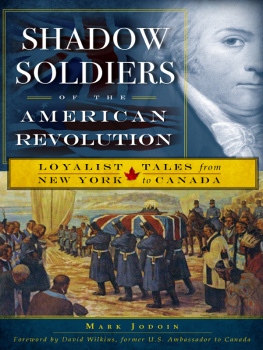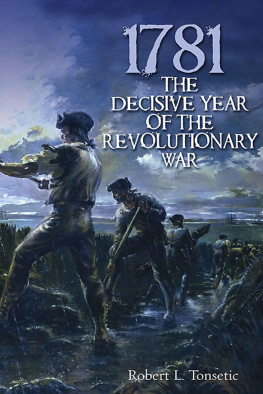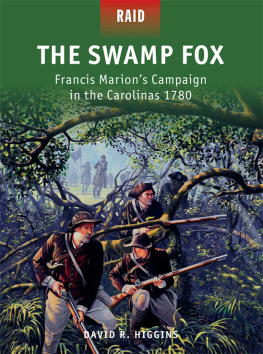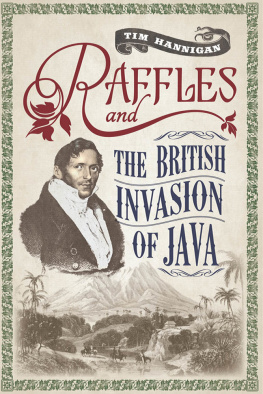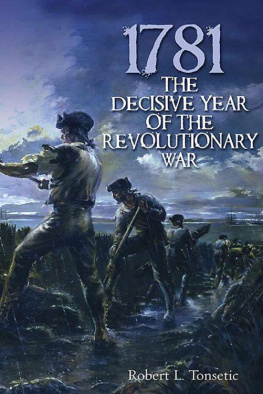
A dirty, trifling, piece of business
VOLUME 1:
THERE VOLUTIONARY WAR AS WAGED FROM CANADA IN 1781
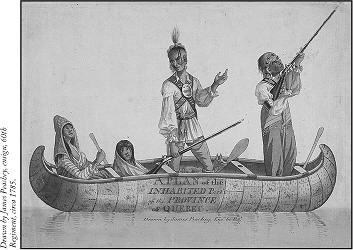
Canada Indians hunting waterfowl from a canoe.
A dirty, trifling, piece of business
VOLUME 1:
THERE VOLUTIONARY WAR AS WAGED FROM CANADA IN 1781
Gavin K. Watt
with the research assistance of James F. Morrison and William A. Smy

Copyright Gavin K. Watt, 2009
All rights reserved. No part of this publication may be reproduced, stored in a retrieval system, or transmitted in any form or by any means, electronic, mechanical, photocopying, recording, or otherwise (except for brief passages for purposes of review) without the prior permission of Dundurn Press. Permission to photocopy should be requested from Access Copyright.
Editor: Shannon Whibbs
Designer: Courtney Horner
Printer: Friesens
Library and Archives Canada Cataloguing in Publication
Watt, Gavin K
A dirty, trifling piece of business / written by Gavin
K. Watt ; research assistance by James F. Morrison and
William A. Smy.
Includes bibliographical references and index.
Contents: v. 1. The revolutionary war as waged in
Canada in 1781.
1. Canada--History--1775-1783. 2. United States--History
Revolution, 1775-1783. 3. Haldimand, Frederick, Sir, 1718-1791.
I. Morrison, James F. II. Smy, William A. III. Title.
FC420.W38 2009 971.02'4 C2009-900010-5
1 2 3 4 5 13 12 11 10 09

We acknowledge the support of the Canada Council for the Arts and the Ontario Arts Council for our publishing program. We also acknowledge the financial support of the Government of Canada through the Book Publishing Industry Development Program and The Association for the Export of Canadian Books, and the Government of Ontario through the Ontario Book Publishers Tax Credit program and the Ontario Media Development Corporation.
Care has been taken to trace the ownership of copyright material used in this book. The author and the publisher welcome any information enabling them to rectify any references or credits in subsequent editions.
J. Kirk Howard, President
Printed and bound in Canada
www.dundurn.com
For Nancy E. Watt
My silent editor and greatest supporter
CONTENTS
- 2. The Background to the 1781 Campaign
A Plan of Attack Upon Quebec - 3. Winter Turmoil on the Western Frontier
Driven to the Last Extremity - 4. Spring: The Calamities of the Country
Ravages of a Barbarous & Ruthless Savage Enemy - 5. A Bloody Early Summer on the Frontiers
A Long Train of Horrid Villainy - 6. Constantly Infested with Parties of the Enemy
I Shou'd Hope to Give a Good Account of Him - 7. The Hammers Fall
Comparative Chronology: Ross and St. Leger
They Broke and Fled with Precipitation
They Cannot Have the Least Hope of Success
Settlements in Vermont's Western Union and Along the
Hudson River south to Kingston
Mid-Mohawk Valley Showing Tryon's Four Districts and
the Edge of Albany County
Plan of the Fort and Settlment of Kahnawake (a.k.a.
Caghnawaga or Sault St. Louis)
T his book is intended to appeal to students of the American Revolution in Canada and the northern United States. The text will be enjoyed by those with a good knowledge of the reasons for, and the progress of, the war, as well as the primary personalities involved and the various organizations that fought in the conflict. Only a few of the participants receive personality development, on the assumption that readers will already know of such personages as Molly and Joseph Brant, Philip Schuyler, John Butler, and Sir John Johnson.
One of the more serious criticisms of my book, Burning of the Valleys, which told the tales of the four raids mounted from Canada against New York's frontiers in 1780, was my failure to describe what occurred the following year. It was implied that I was hiding something; that I had failed to admit that the Crown Forces had enjoyed their "last hurrah" in the fall of 1780 and that, when the defence of the Mohawk region was placed under Marinus Willett's command in 1781, the loyal Natives, Tories, and Regulars were thwarted in all of their designs and raiding virtually ceased. There was no more destruction of farms, crops, and livestock; there were no more captures or killings and life almost returned to normal, indicating that by 1781, the United States had won the war in the north. Another suggestion was that just maybe I had remained mum about 1781 because I had plans for a second book that would reveal all. This was correct.
This volume is a departure from my earlier works, as it is significantly wider in scope and covers a full campaign season.
Once again, Jim Morrison of Gloversville, New York, has freely provided immense amounts of research material in packages sent north through the mail, his pensions website and in his many published works.
Butler's Rangers expert, Bill Smy of St. Catharines, Ontario, has assembled a superb collection of archival transcripts and provided me with copies that have proven invaluable, as have his several publications.
Just as I was finishing the text, I was in touch with Ken Johnson of Fort Plain, New York, and stumbled into the contentious issue of the forts' names and locations. After much back-and-forth dialogue, Ken convinced me that by 1781 Fort Plank had been renamed Fort Plain and that Fort Rensselaer lay three miles to the east. Ken also helped me by locating the many smaller forts and other key features in the Mohawk Valley.
Drew Smith first brought the Hanau Jgers's papers to my attention. Justin Boggess expanded the search in various archives and provided wonderful details of St. Leger's 1781 adventure on Lake Champlain.
Jeff O'Connor, the Schoharie Valley historian, again provided me with details of events, personalities, and forts.
Neil Goodwin, a Vermont historian, assisted with the perambulations of the Haldimand negotiations.
My friend, John A. Houlding, far off in Germany, traced the careers of many of the Regular officers in this account.
Christopher Fox of Fort Ticonderoga provided a superb map of that installation. Hugh McMillan gave me copies of a wonderful study of the intrepid Walter Sutherland's career as a British intelligence agent. Margaret Gordon sent details of that naughty fellow, Jacob Klock Jr., and Wilson Brown revealed William Marsh's Secret Service role.
Chris Armstrong provided yeoman service in the design and research of the book cover and assisting with many of the illustrations.
My thanks to Christian Cameron, who suggested the path that this book should follow.
Lastly, to my daughter Nancy, who corrected my syntax and massaged my narrative.
Next page


